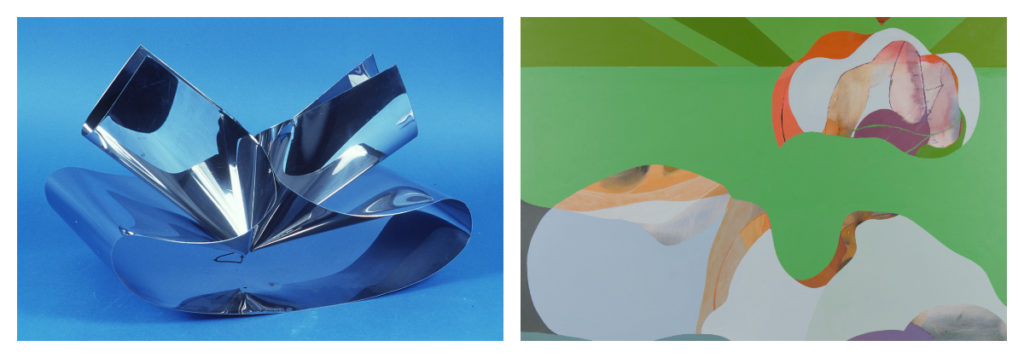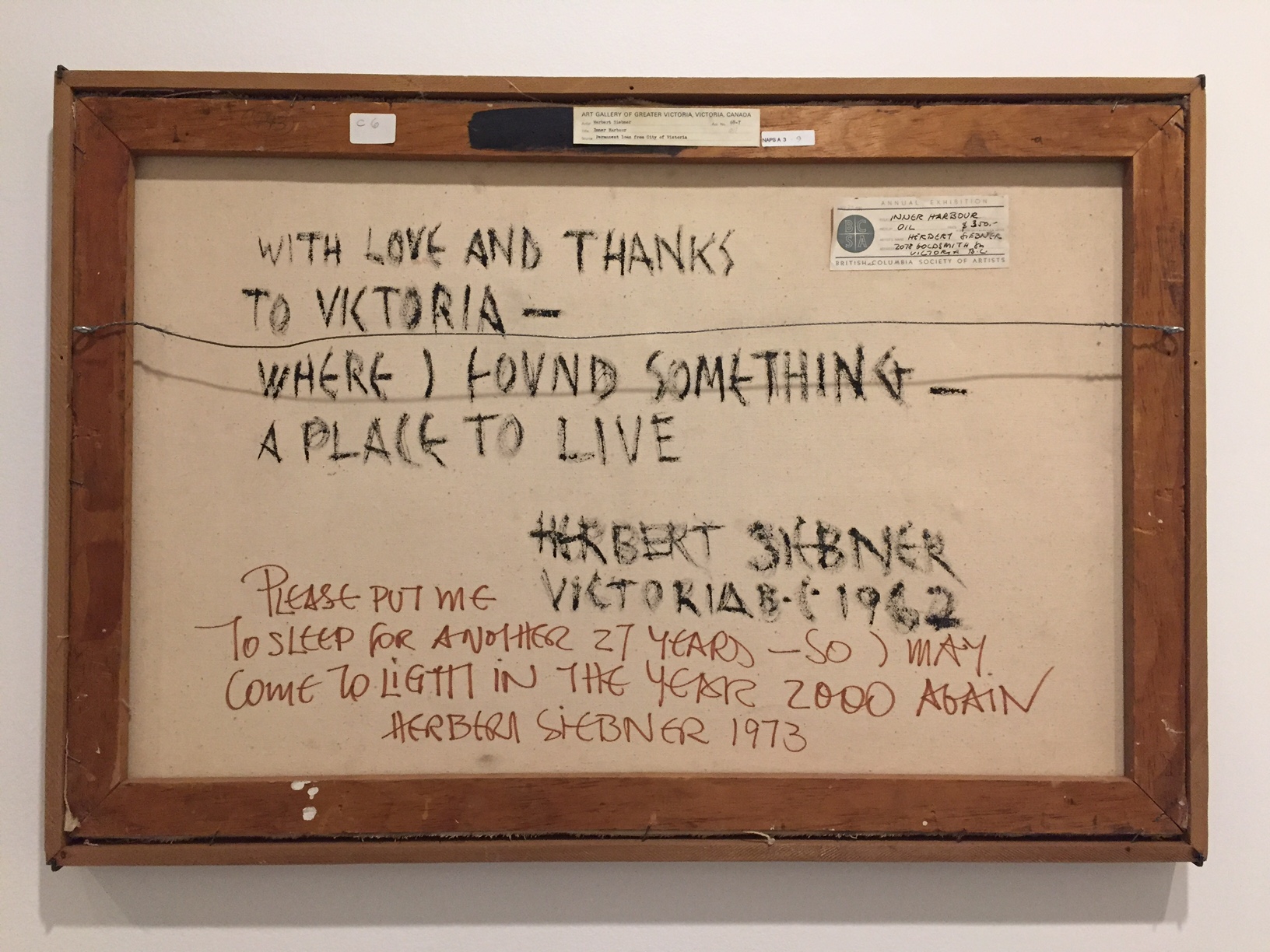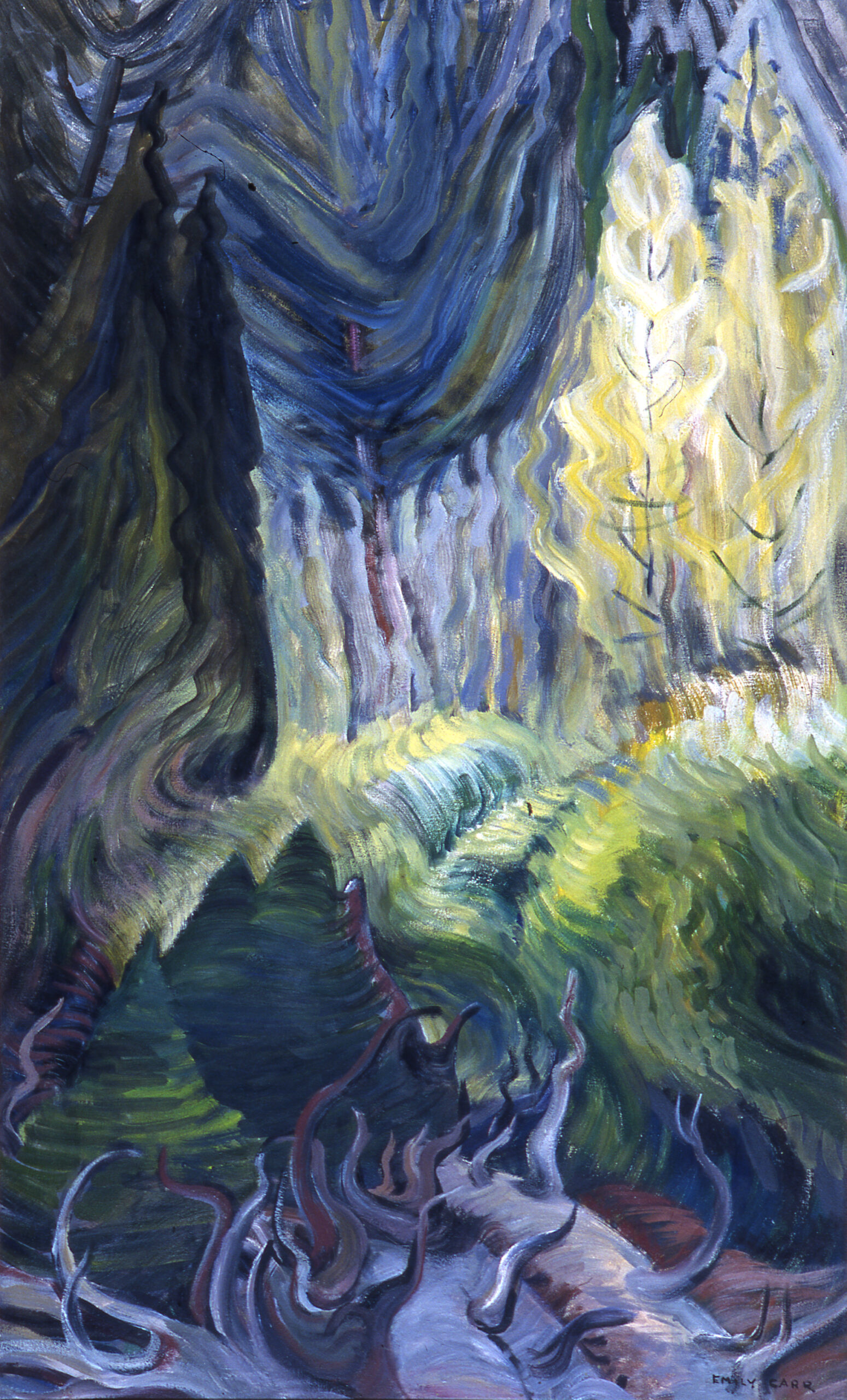By Audrey Wang, AGGV Volunteer
In our last issue of the emagazine, our article “Powerful Stories Close To Home” related how pairings and groups of artworks in the exhibition Close To Home complemented each other. By viewing these groupings of works in tandem, new ways of understanding and appreciating them were conceived. The Curator’s Tour on June 6 reiterated some of these notions and gave attendees a greater insight into what went on behind the scenes during the conceptualizing of the exhibition.
Chief Curator, Michelle Jacques, began her tour by confiding about a recent online review in which a first-time visitor to the Gallery criticized the content of the exhibition, in particular, questioning “why all this bizarre abstract local art?”. The reviewer, Michelle recounted, would have preferred to see more work by Emily Carr and Asian art exhibitions. On the other hand, there have been visitors to the Gallery who have asked to see more representation by local artists. Even Emily Carr, in her writings, pushed for an art gallery in Victoria, to ensure that the local art community had a place to show their work. In essence, this is what Close To Home is about.

Right: James Gordaneer (1933-2016) | Palaeo Plain | 1970 | Acrylic on canvas | Honouring Gordon Lidstone for 6 years of service on the AGGV Board of Directors from 2008-2014
Michelle found building the exhibition difficult from the curator’s point of view. There were few resources for the show, and little time and opportunity to research all of the available works. So, the selection of artworks was based on the curator’s intuition. Similarly, the installation of the exhibition was intuitive, done by looking at and responding to how the various artworks related to the show and to each other. As such, works spoke across cultural divides. The text panels provide factual information about the artist and the work, but are additionally paired with Michelle’s first-person explanation for why works were hung in a certain way. And because how one responds to art is such a very personal thing, a “Curator’s Desk” is set up at the back of the first room, to allow visitors to create their own stories with the artworks in the exhibition, and reinterpret the concept of the show.
After a lengthy introduction to the “behind the scenes” aspect of the exhibition, Michelle encouraged participants to explore the first room of the show, before returning to share their responses. She also urged them to view the groupings of artworks as vignettes, as a way to focus thoughts and responses.

Among the participants was artist Roberta Pyx Sutherland whose work is featured in the exhibition. Having lived and practiced in the region for many decades, she is personally associated with many of the artists featured in Close To Home and was happy to share stories and experiences. Herbert Siebner, she recounted, was fond of inscribing his paintings to the eventual buyers. This is absolutely evident in the painting, Inner Harbour, (pictured above) featured in the exhibition. Some might balk at the cheeky back-to-front hanging of the painting, but more than just a landscape of a beloved city, Siebner’s inscription on the verso brings the viewer to a whole new level of understanding how he felt about Victoria.
Feature image (top): Herbert Siebner (1925-2003) | Inner Harbour (verso) | 1960 | oil on canvas | On permanent loan from the City of Victoria
Close to Home: Local and Regional Artists in the AGGV Collection | April 22 – September 4 2017 | Curated by Michelle Jacques | Centennial & Ker Galleries



